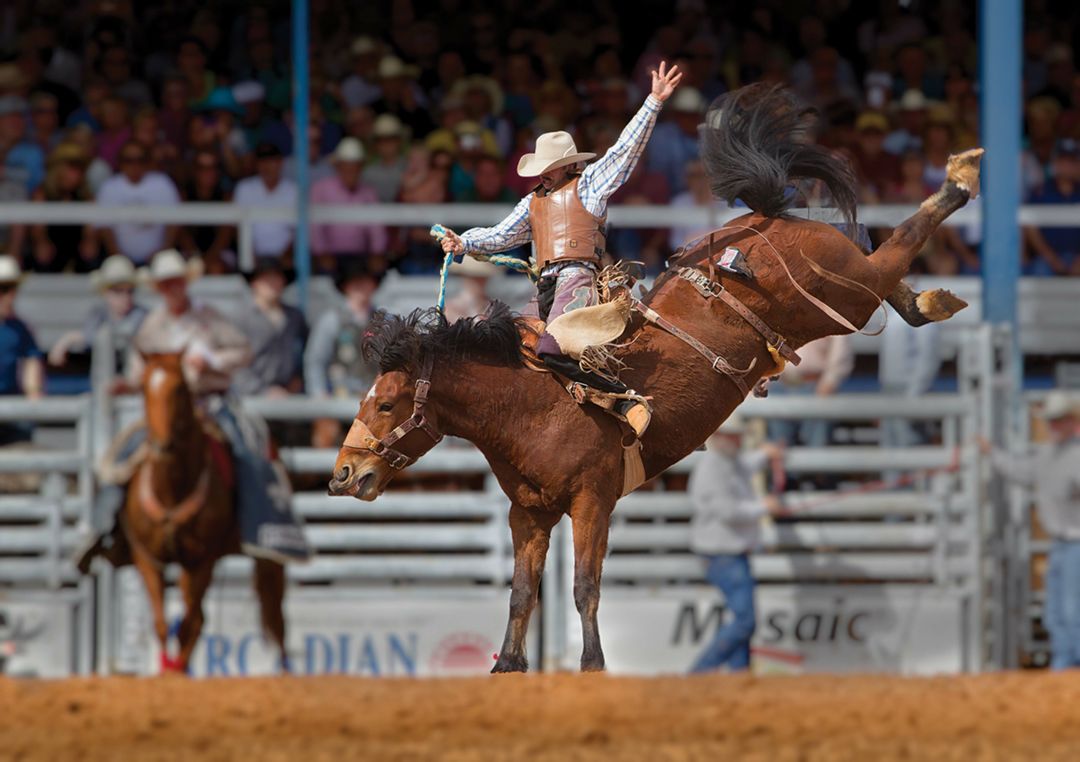Lasso Lovers Mosey on Out to Arcadia for One of the Nation’s Top Rodeos

The Arcadia Rodeo started in 1929 as a fund-raising event by American Legion members.
Image: Shutterstock.com/Kobby Dagan
Returning March 10-13 for its 94th year, the Arcadia All-Florida Championship Rodeo is the largest and longest-running rodeo in Florida. Nationally renowned, it’s been called the best rodeo east of the Mississippi by the Professional Rodeo Cowboys Association and attracts some of the nation’s top cowboys and cowgirls. With only three paid staff and hundreds of volunteers, the rodeo generated $1.2 million for local tourism in 2019 and attracts about 20,000 spectators.
How It Began
The Arcadia Rodeo started in 1929 as a fund-raising event by American Legion members. In 1952, it became its own nonprofit. Now it has a 20-acre arena and a 100-acre civic center owned by DeSoto County. The rodeo gives $60,000 per year to local organizations, including Future Farmers of America, 4H and JROTC.
Starstruck
Notable rodeo champions have ridden through the gates at the Arcadia rodeo, including famous bull rider J.B. Mauney, national saddle bronc riding champions and brothers Cody and Jake Wright, and the late Fred “Matthew” Condo, a well-known Arcadia rodeo man and six-time all-Florida champion.
Winner Takes All
A $10,000 prize is awarded to the winner of each of seven events, including bull riding and bareback and saddle bronc riding, and timed events like barrel racing, calf roping and steer wrestling. Cowboys train with purebred Quarter Horses, worth up to $200,000, for timed events, but randomly draw the bulls and broncos they’ll ride for the rough events.
Ranchman’s Roots
“All rodeo events stem from practical applications in the ranching industry, except for bull riding,” says Arcadia rodeo director of donor relations Justin Fussell. “It’s more of a flashy event for the wow factor.” All others, like calf roping and barrel racing, come from the need to ride fast to injured or sick cattle and rope them down to be medically examined.
No Bull
Rodeo bucking bulls weigh between 1,600 and 2,000 pounds. They’re not aggressive, but are trained to perform or “buck.” Mexican fighting bulls, on the other hand, “are mad from the moment they are born,” says Fussell. “These ones are trained in Spain for bull fighting.” Riders must stay on the bull’s back for at least eight seconds, with one hand in the air at all times.
Giddy Up!
Rodeo horses can run up to 44 miles per hour as soon as they’re released from the gate. In barrel racing, they must run around three barrels in a clover leaf pattern without knocking them over or breaking the pattern.
Spectators Are Welcome
Enjoy vendors, food, apparel and live music before and after the events. “There’s always a mechanical bull somewhere, a petting zoo and camel rides for the kids,” says Fussell. “There’s also pre-show performances and an event called ‘mutton busting,’ where kids compete and ride sheep. That’s a favorite around here.” And don’t miss the parade. Visit arcadiarodeo.com.



